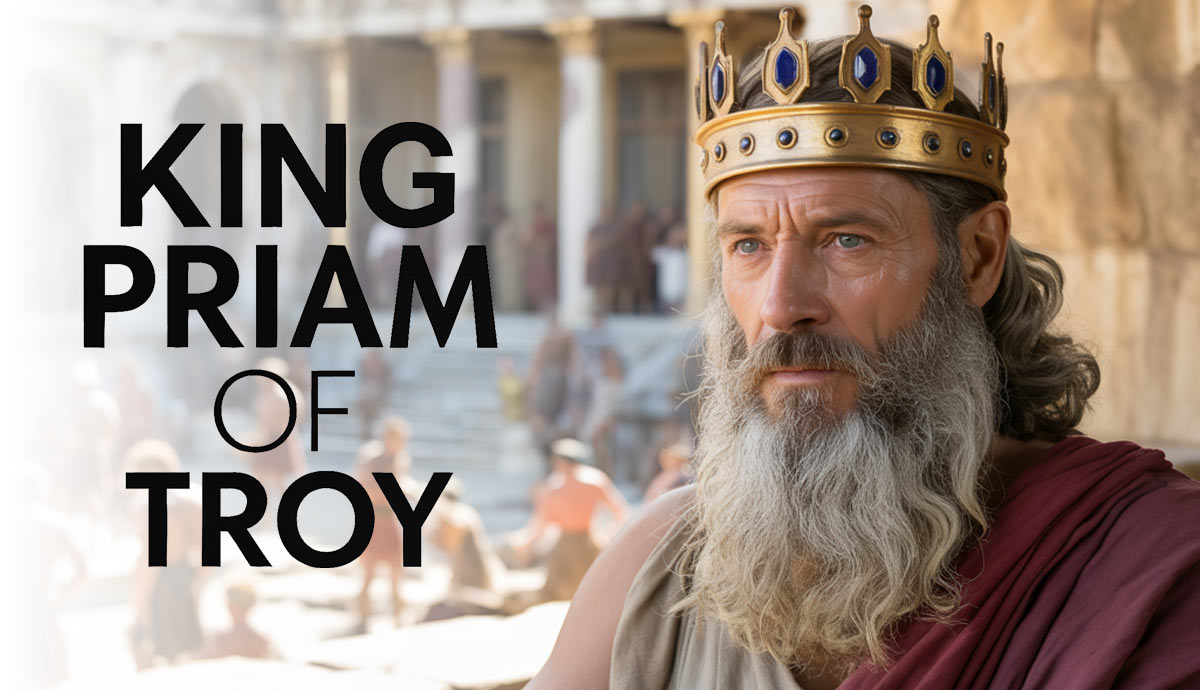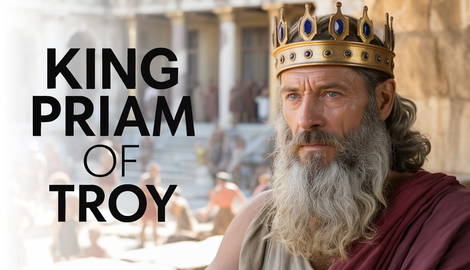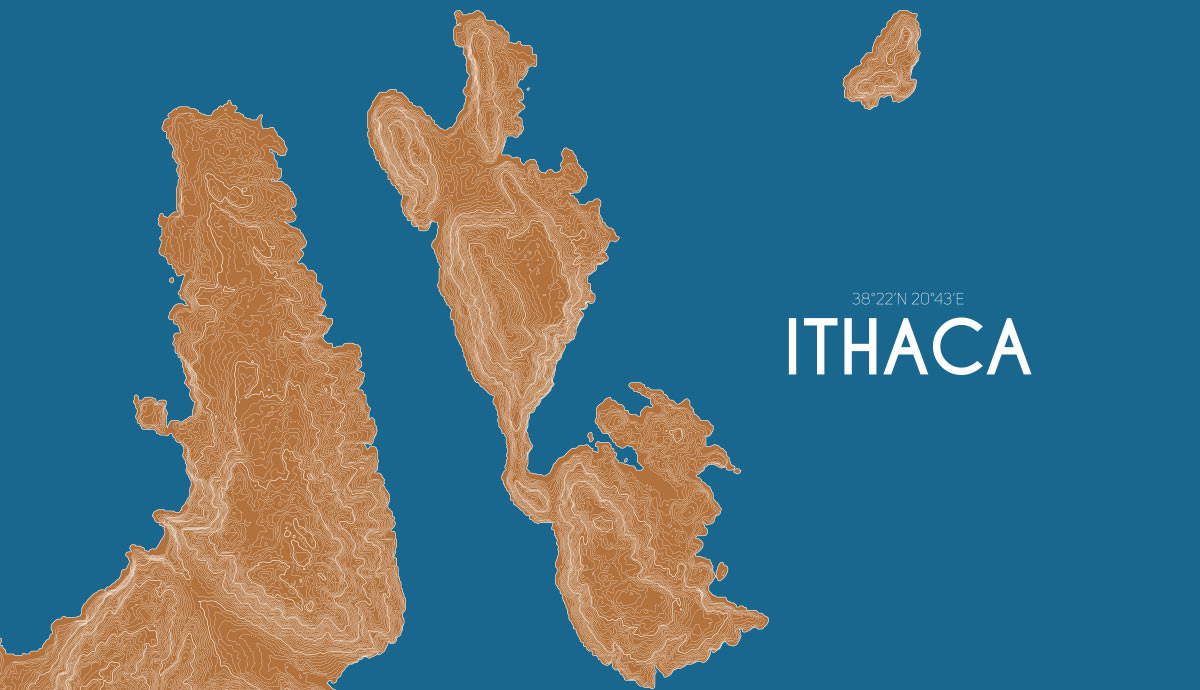
In Homer’s description of the Trojan War, Priam is the king of the city of Troy when it is attacked by an alliance of Greek warriors. According to the Iliad, Priam was the 6th king in a Greek dynasty that settled in Anatolia and ruled the people who would become the Trojans. The destruction of Troy and the death of his sons meant that Priam was the last king of Troy, but not the last king of the Trojans. Aeneas, a more distant member of the royal family, led the Trojans across the Mediterranean, eventually settling in Italy, leading to the foundation of Rome. What else do the legendary sources tell us about Priam and his dynasty, and is there any historical evidence to confirm the legends?
King Priam of Troy in the Iliad

The city of Troy, famous for the Trojan War, was home to a powerful dynasty of kings, according to Greek legend.
The king who was ruling over the city at the time of the Trojan War was named Priam. The earliest source in which Priam is mentioned is the Iliad, composed by Homer probably in the 7th century BCE.
We learn from the Iliad that Priam was the father of numerous sons and daughters. His eldest son was Hector, the valiant warrior who fought against Achilles. There is also Paris, a younger son who inadvertently caused the Trojan War by running off with Helen of Sparta. Among his daughters, the most famous is undoubtedly Cassandra, the prophetess and priestess of Apollo. She was said to have the ability to foretell the future.
The Dynasty of Trojan Kings

Homer tells us a great deal about the origin of Priam’s dynasty. For instance, he explains in the Iliad that it was founded by a ruler named Dardanus. He was the son of Zeus. Later sources, such as Dionysius of Halicarnassus, explain that Dardanus was from Greece. This is consistent with Homer’s presentation of the Trojans as essentially being Greek in culture, language, and religion, in contrast to some of their Anatolian allies.
According to Virgil’s Aeneid, written in the 1st century BCE, Dardanus married the daughter of Teucer, a previous founding figure who had arrived in the area. He was from Crete. Although this legend dates to the 1st century BCE, we see a reference to the same idea as early as the 3rd century BCE. Although not mentioning Teucer by name, a Greek historian named Lycophron referred to Dardanus as marrying into the royal house of Crete. Of course, Crete had become a Greek island by the time of the setting of this legend, so the Trojans’ origins are Greek from both Dardanus and Teucer.

However, neither the arrival of Teucer nor the arrival of Dardanus marked the foundation of Troy as a city. Dardanus founded Dardania, which was near Troy but not actually on the same site. Homer tells us:
“[Dardanus] founded Dardania, for not yet was sacred Ilios builded in the plain to be a city of mortal men, but they still dwelt upon the slopes of many-fountained Ida.”
The city of Troy was not founded until several generations later. Dardanus had a son named Erichthonius, who in turn had a son named Tros. He gave his name to his subjects. Thereafter, they were known as Trojans. Tros had a son named Ilus. When he succeeded him as king, Ilus founded a new major city in the area. This was named Ilios, or Ilion, after him. It was also known by the alternative name of Troy. This was made into a major settlement and became the new capital city of the Trojans.
A Monster Attacks Troy

Life in Troy between the reigns of Ilos and Priam was not without difficulties. In fact, during this period, there was a major attack on Troy, which almost wiped out this line of legendary kings. Ilos’ son Laomedon succeeded him as king. He desired to fortify the city of Troy, so he made an arrangement with Apollo and Poseidon in return for their help. They constructed the massive defensive walls of the city. However, Laomedon then refused to give them their payment. This resulted in them sending a monster to attack Troy.
To save the city from this attack, Laomedon promised Heracles payment for defeating the monster. Heracles did as Laomedon asked, but the king of Troy once again went back on his word. As a result, Heracles attacked the city with only a few ships and destroyed almost the entire royal family. He left Priam, who was then a youth, as the sole surviving prince and allowed him to rule as king.
What Became of the Kings of Troy?

Priam is described as already an old man when the Trojan War took place. What became of the legendary kings of Troy after this? Priam himself was killed by a son of Heracles. Hector, the heir, was killed by Achilles. Paris, the prince whose actions had led to the war, also died during the fighting. With the utter destruction of Troy and the almost complete annihilation of the royal family, it might seem as if this legendary line of kings would come to an end. However, in the Iliad, Homer presents Poseidon as foretelling that Aeneas, a prince far removed from the throne of Troy, would become the future king of the Trojans. Furthermore, his descendants would go on to rule over them too.
Homer never recounts the fulfillment of this prophecy. However, numerous later records claim that Aeneas led a migration of Trojan survivors to Italy. Subsequently, either Aeneas or one of his descendants (depending on the source) is said to have founded Rome.
The History Behind King Priam

These legendary kings from the epics also appear in Greek records dating to the 7th century BCE and later. Based on the estimates of ancient historians, the traditional chronology places the Trojan War in the Late Bronze Age. There are some researchers who believe that there may well be some surviving references to these kings in records from that era.
Hittite tablets refer to a war leader named Piyama-Radu. He appears in several different records in that era. They make it clear that he was a prominent figure of his time. He evidently caused considerable trouble for the Hittites over the reign of more than just one Hittite king. Due to his name and his area of activity, some scholars speculate that he might have been the historical figure behind the legends of Priam.
However, this theory is fraught with problems. Crucially, these Hittite records present Piyama-Radu as an ally of the Ahhiyawa, the Mycenaean Greeks. He is presented as fighting against Wilusa, or Troy, as well as the nations presented as Troy’s allies in the legends.

Another controversial figure is Alaksandu of Wilusa. This latter location is widely agreed as being identical to the Troy of Greek legend. One Hittite letter from the 13th century BCE mentions a treaty made with the king of Wilusa, a certain Alaksandu. This appears to be a form of the Greek name Alexandros. Since this was the second name of Paris, Priam’s son, many have sought to identify this Alaksandu with the legendary Paris of Troy.
However, this identification suffers from several important problems. For one thing, as we have seen, Paris was not the eldest son of Priam. Even if we accept that the heir to the throne of Troy would have represented his father as king of Troy in a treaty with the Hittites, the heir would have been Hector, not Paris. Furthermore, if we were to accept Alaksandu as Paris Alexander, this would mean that we would have to reject the identification of Piyama-Radu as Priam due to the chronological issue of them needing to be father and son.
King Priam and the Trojan Dynasty

In conclusion, what do we know about the legendary kings of Troy? According to Homer, this dynasty was founded by Dardanus. Other records refer to Dardanus as marrying the daughter of Teucer, a recent arrival from Crete. Two generations later, Dardanus’ grandson Tros ruled over the people and named them Trojans after himself. In turn, Tros’ son Ilos built the city of Troy, naming it Ilios in his own honor. Subsequently, Ilos’ son Laomedon fortified the city with the help of the gods, although his treachery ultimately led to the end of the dynasty.
Decades later, with Priam on the throne, the Trojan War occurred. Despite Priam having numerous sons and daughters, this war almost wiped out his entire family. The line of the kings of Troy continued, however, with Aeneas, husband of Priam’s daughter Creusa. He led the Trojan survivors to Italy, where they founded the city of Rome. As for their historicity, attempts to identify Priam and Paris Alexander as figures from Late Bronze Age Hittite records are fraught with issues.










